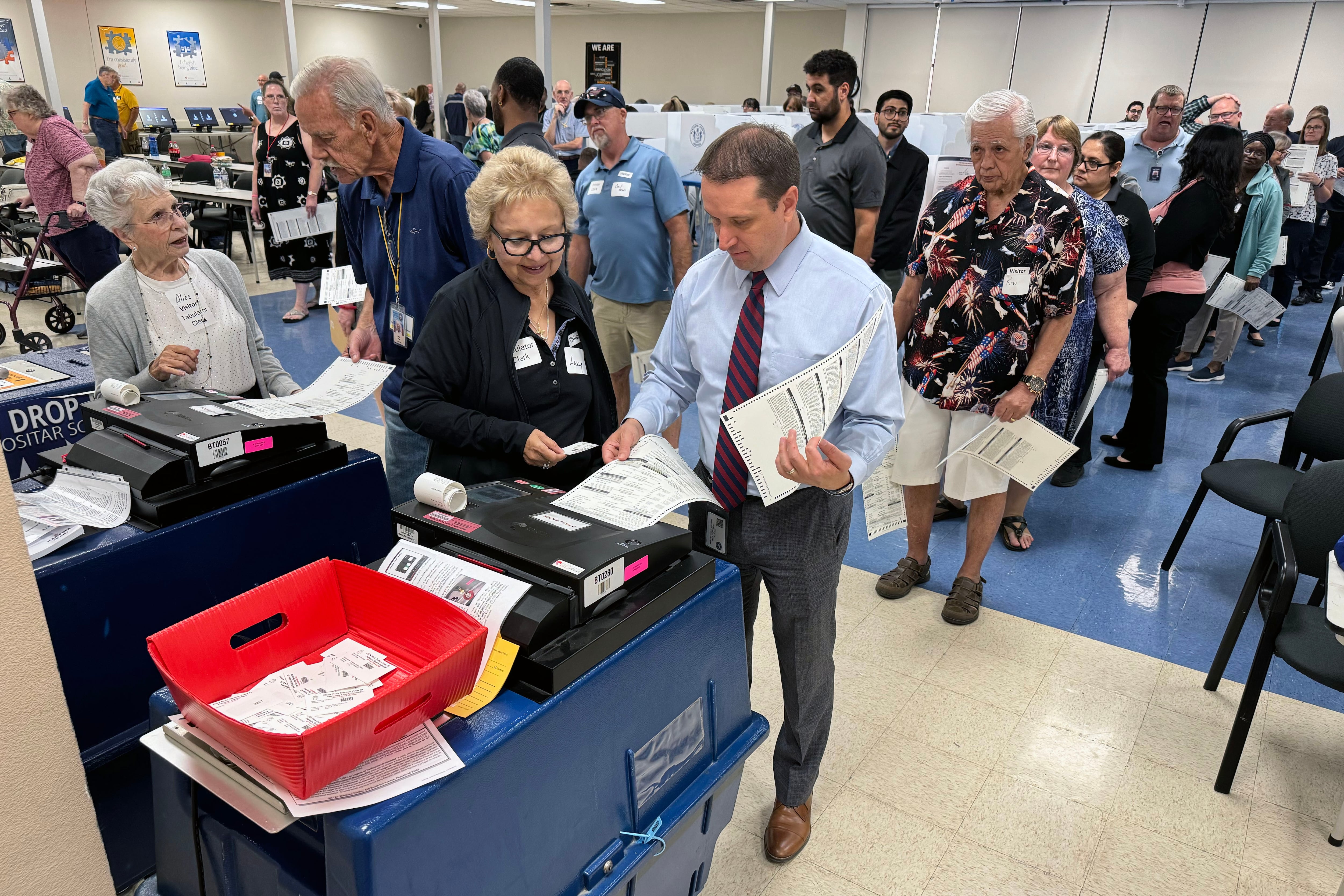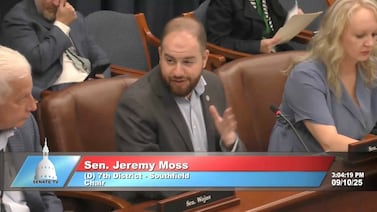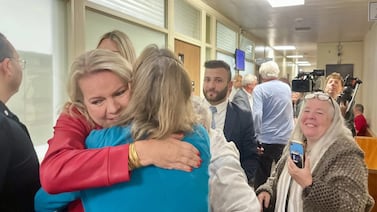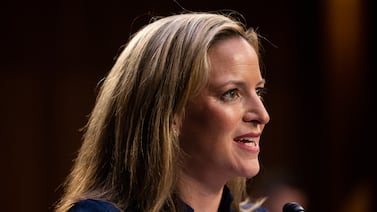Votebeat is a nonprofit news organization reporting on voting access and election administration across the U.S. Sign up for Votebeat Arizona’s free newsletter here.
Arizona’s long ballot has already caused a few slight delays in Maricopa County during the first few weeks of early voting, along with other complaints that may continue through Election Day on Tuesday and beyond.
The county had to stretch its ballot onto two sheets of paper, front and back, for the first time in nearly two decades. That’s because there are so many contests — an average of 79. Election officials knew of the types of problems this could cause, and tried to prepare.
Nonetheless, the consequences have begun to emerge, including a slight delay in mail ballot deliveries and a last-minute need for overnight workers, Votebeat has learned. And concerns about long lines and paper jams at polling places are spreading. Others are concerned with how officials have decided to track the two pages of each ballot once they are returned. All these issues may turn into easy targets for post-election litigation.
More paper means fatter envelopes and heavier loads
In early October, the U.S. Postal Service began receiving 1.9 million ballots sealed in envelopes to send out to the voters on Maricopa County’s early voting list. Because the envelopes had more papers in them, they were larger and heavier.
The added weight meant that fewer ballots could be carried by each mail carrier in each batch, according to county spokesperson Sierra Ciaramella.
This caused a slight delay in delivering the ballots, Ciaramella said. The county declined to give more details, referring questions to the Postal Service. USPS spokesperson John Hyatt said the delivery delay was “no more than one day.”
“While the thickness of the mailpieces created some operational challenges, we overcame those challenges,” Hyatt wrote, emphasizing that USPS is more than capable of meeting the need to send out election mail, which makes up just 0.9% of all the mail it handles nationally.
Still, voters noticed the delay — and many said it was much longer than a day. Alex Gulotta of All Voting is Local said that its nonpartisan Election Protection hotline, at 1-866-OUR-VOTE, received 133 calls, more than usual, from voters wondering where their ballot was. At least 30 were from voters who said that their ballot was later than usual.
Another delay emerged when voters sent their ballots back. After verifying voter signatures on the ballot envelopes, workers were taking longer than usual to open the envelope, separate the ballot from it, lay the pages flat, and check for damage before tabulation.
The county is now bringing in county workers from outside the elections department to support the work. Also, in the early morning hours Thursday, the county trained a new shift of workers who will start an overnight shift, from midnight to 6 a.m.
“Shifts will be taking place around the clock at Maricopa’s tabulation center to support these efforts,” Maricopa County elections spokesperson Jennifer Liewer said.
Republicans challenge the county
While county supervisors had planned in the spring for a longer-than-usual ballot, the county didn’t know until August just how long it would be. After finding out, the elections department increased the number of workers, Election Day vote centers, check-in stations, and voting booths, hoping to accommodate the extra time that voters would need with the ballot, Liewer said.
While the initial election plan approved in May called for 230 to 235 vote centers, the county now plans to have 246.
Still, the Republican National Committee and GOP congressional candidate Abe Hamadeh accused the county of not taking the long ballot into account when planning for Election Day, saying they believe that it will cause “dramatically longer lines.”
“As you know, many voters will not be able to endure an hours-long wait to vote, effectively disenfranchising them if the lines grow too long,” Hamadeh and Harmeet Dhillon, lawyer for the RNC, wrote to the Board of Supervisors on Oct. 24. They also wrote that they were worried about possible paper jams as people cast their ballots — something that the county has said it is thinking about as well.
They asked for an “emergency meeting” and suggested the county add more tabulation machines, booths and voting locations, and conduct voter education on the potential for long lines.
In an Oct. 25 response, Deputy County Attorney Joseph La Rue explained the increase in vote centers and equipment that had already taken place. He pointed out that some of the research cited in the letter was done by Verity Vote, which he called a “discredited organization that has been shown to play fast and loose with the facts.” He also cited Votebeat’s investigation of the firm’s leader.
“Our clients do not see the need for an emergency meeting with your clients,” La Rue wrote.
Officials reassure voters that they’ve thought ahead
Other complaints, for example about the way that the county is tracking the two pages of the ballot as it tabulates them, have also arisen and are sure to continue causing concern. Some voters might return just one of the pages, making it hard for the county to reconcile the number of ballot pages cast with the number of voters who voted.
In a widely shared post on social media platform X, an elections activist wrote that the county was “NOT COUNTING BALLOTS…ONLY PAGES.”
Elections Director Scott Jarrett said at an Oct. 22 news conference that there is no requirement for a voter to return both pages of the ballot. For early ballots, workers will write on the envelopes how many pages were returned. At voting locations, he said, workers will encourage voters to return both pages.
Liewer said at the news conference that the county officials have thought ahead on many other issues, such as making sure their ballot trays could carry heavier envelopes.
They know that instead of 2.1 million pieces of paper in prior elections, she said, they may be looking at 4.2 million pieces now.
Jen Fifield is a reporter for Votebeat based in Arizona. Contact Jen at jfifield@votebeat.org.




